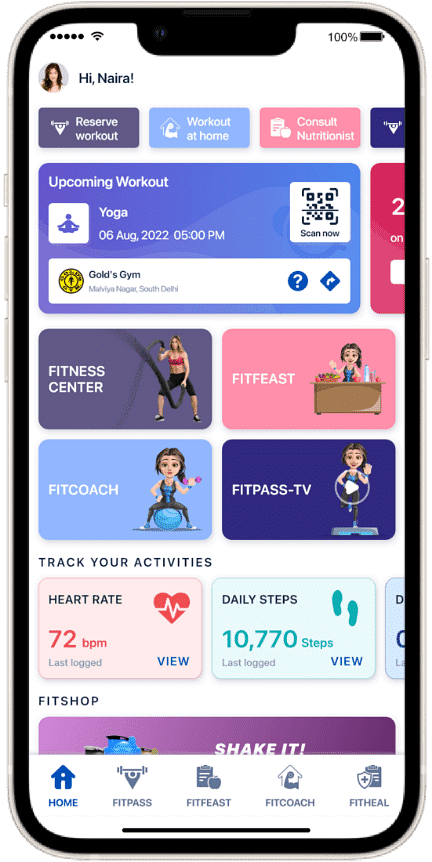High Blood Pressure Management | Is The DASH Diet Any Good?
Table of Contents
The number of people suffering from high blood pressure across the world is extremely high and rising. Hypertension leads to several chronic illnesses like heart disease, strokes, and kidney failure. Diet is the foremost factor in the development of high blood pressure and controlling it can help lower blood pressure. Some say that the DASH diet can help. Can it really?
What is the DASH Diet?

Dietary Approaches to Stop Hypertension (DASH). The name says it all.
Based on fruits, vegetables, whole grains, and lean meats, the DASH diet is a special plan for people who want to prevent or treat hypertension. Researchers, who noticed that people who were vegans or vegetarians had fewer cases of hypertension among them, created the diet plan.
The DASH diet excludes or limits red meat, salts, fats, and added sugars. However, scientists believe that the reduction of salt plays a major role in controlling blood pressure. The DASH diet permits no more than 1 tsp. of salt every day, which is equal to 2,300 mg. Keeping it down to 1,500 mg per day is much better.
Benefits of Exercise on DASH Diet
The benefits of the DASH diet are more easily available when you pair it with regular physical activity. The independent benefits of exercise are good enough to keep you fit and healthy. Exercising for up to 30 minutes every day is recommended by most doctors.
You should brisk walk for up to 3 kilometers or run for up to 5 kilometers – try to finish within half an hour. You can go cycling as well; it should be enough to cycle 5 kilometers within half an hour. Swimming is a great form of exercise since it relaxes the strained body parts while working the entire body. Cleaning your house for up to an hour is also a great way to exercise.
Want to try new workout routines to see what you can include in your routine? Join FITPASS and choose from several workout routines. Book unlimited workout sessions at gyms and fitness centers near your home or office across 12+ cities of India.
Benefits of the Dash Diet

Normal blood pressure is 120/80 mmHg; a blood pressure reading of 140/90 or above is considered higher than normal. The DASH diet has been found to lower blood pressure in people with high blood pressure as well as in healthy people. Studies on the DASH diet revealed that it lowers blood pressure if even if the person doesn’t lose weight or limit salt intake.
Reducing sodium intake while following the DASH diet further lowers the blood pressure. It leads to a 12/5 mmHg reduction in people with high blood pressure and 4/2 mmHg in people with normal blood pressure. However, it must be noted that reduced high blood pressure doesn’t always promise a lower risk of heart disease.

Doctors advise losing weight if you have high blood pressure. Your blood pressure is likely to be high if you’re overweight or obese. More than a few studies have shown that losing weight lowers blood pressure. DASH diet studies suggest weight loss in those who were on a controlled calorie diet. Consuming fewer calories than one expends is the way to go. The benefits of the DASH diet are associated with cutting down on high-fat sugary foods that automatically reduces the calorie intake that helps lose weight. People with really high blood pressure might need to cut down their calorie intake even further.
Does the DASH diet work for everyone?
People who cut down on their salt intake received the best benefits of the DASH diet. However, the benefits of salt reduction are not clear. People with high blood pressure witness significant results. However, the results of the DASH diet on blood pressure were minimal on people with normal blood pressure. A person’s salt sensitivity, which is the influence of salt on their blood pressure, plays an important role.
Foods to Eat on the DASH Diet
- Whole Grains – whole-wheat & whole-grain bread, whole-grain cereals, oatmeal, bulgur, quinoa, and brown rice
- Vegetables – all vegetables including leafy greens like spinach or kale. Eat raw broccoli, carrots, tomatoes, etc.
- Fruits – people on the DASH diet are encouraged to eat 4-5 servings of fruit every day. Eat apples, pears, peaches, and berries along with tropical fruits
- Dairy Products – have low-fat dairy products like low-fat cheese and yogurt and skim milk.
- Non-vegetarian – eat lean meat and limit red meat to no more than twice a week. Have lean chicken, eggs, and fish more often
- Legumes, nuts, & seeds – have lentils, walnuts, almonds, sunflower seeds, flaxseeds, hazelnuts, kidney beans, split peas, peanuts, etc.
- Oils & fats – Include vegetable oils like canola, corn, safflower, and olive in your diet as opposed to others. Use only light salad dressing and low-fat mayonnaise
Avoid candies, sweets, and other added-sugar products as much as you can.


